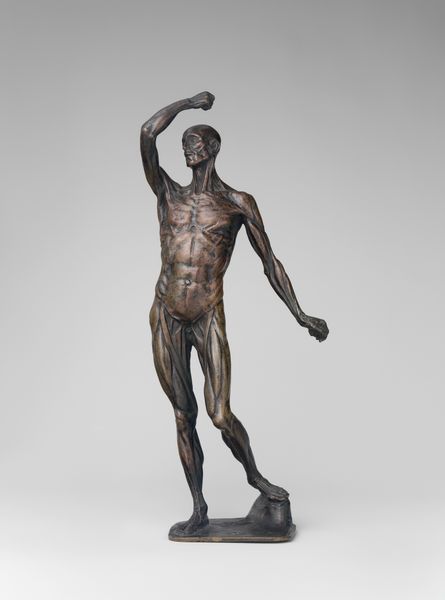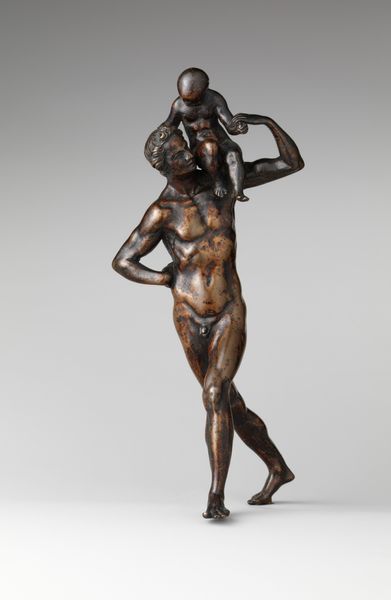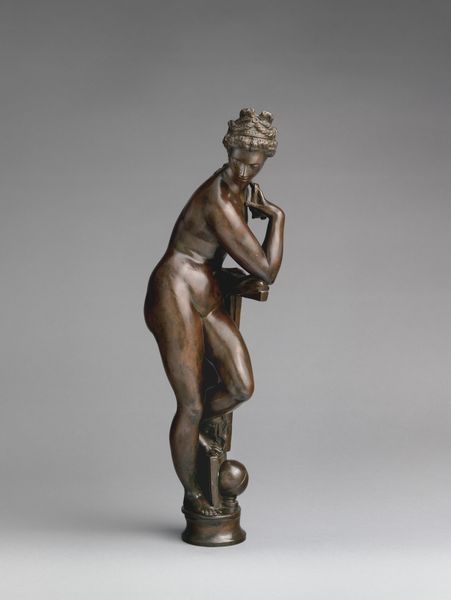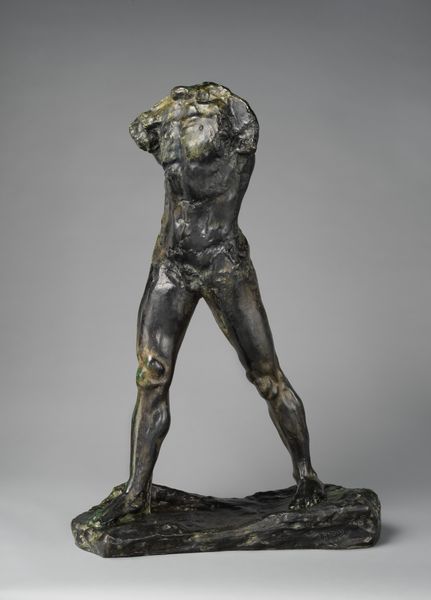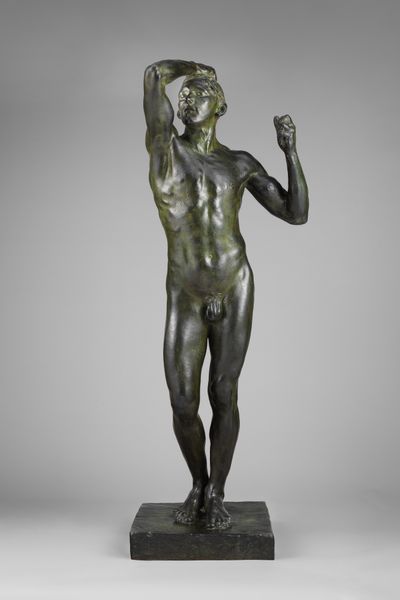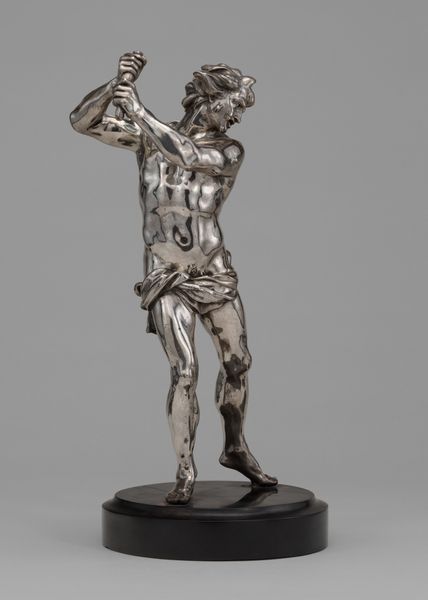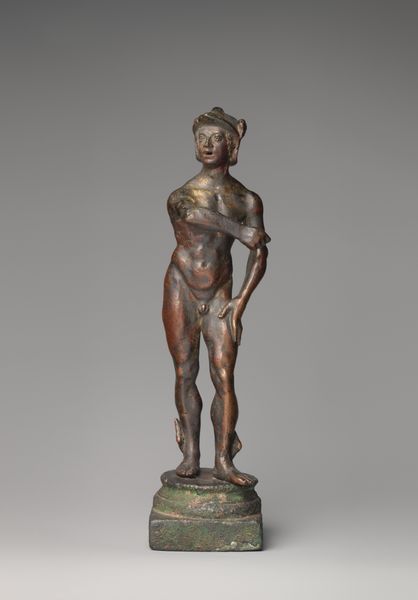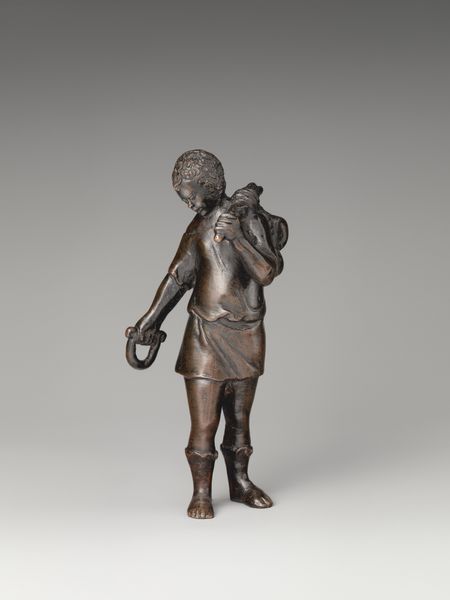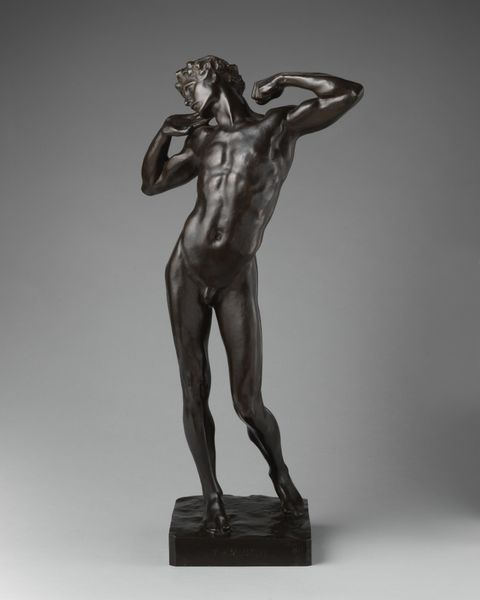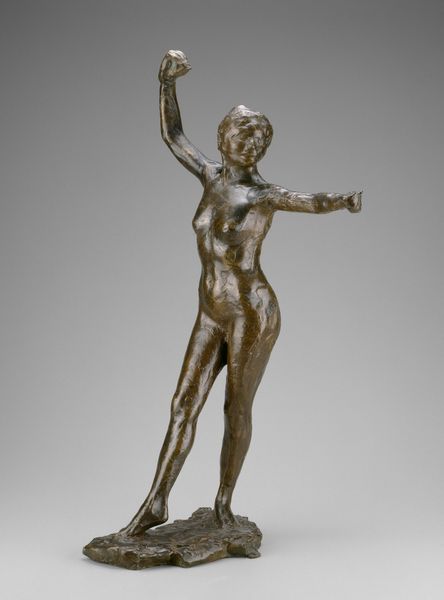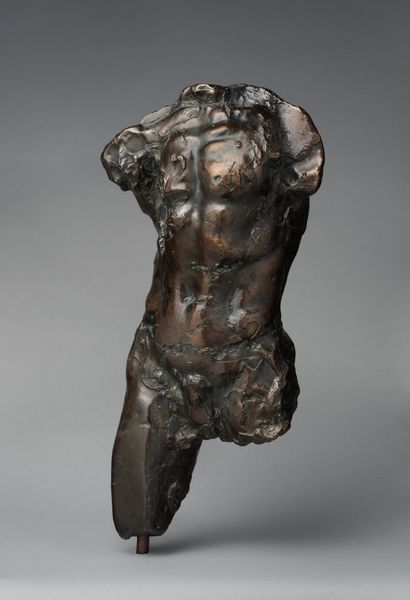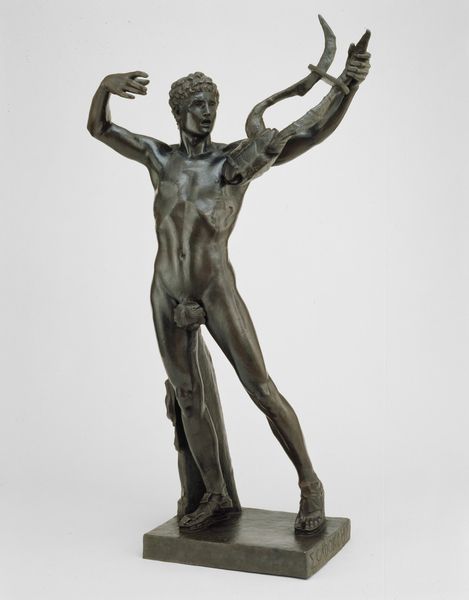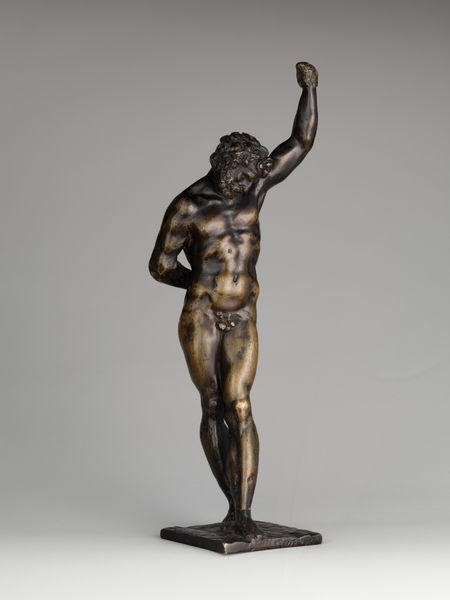
bronze, sculpture
#
baroque
#
bronze
#
figuration
#
sculpture
#
history-painting
#
decorative-art
Dimensions: Overall (confirmed): 10 1/8 × 4 1/4 × 2 1/2 in. (25.7 × 10.8 × 6.4 cm)
Copyright: Public Domain
Curator: Alessandro Algardi’s bronze sculpture, "Flagellator", dates to sometime between 1650 and 1699. It currently resides in the collection of the Metropolitan Museum of Art. Editor: It’s a surprisingly visceral piece. I find it rather unnerving, the way his head is angled down, almost in shame, but there’s a muscularity there, a controlled tension that feels performative. Curator: Performance and piety are certainly key considerations when looking at this sculpture within its socio-political context. Images of flagellation and self-punishment became powerful during the Counter-Reformation. Editor: Right, this imagery was strategic. Flagellation functioned as a theatrical demonstration of remorse and a visible assertion of religious orthodoxy, a potent message broadcast during a time of ideological fractures. Considering it from a feminist perspective, there’s also this unsettling suggestion of willing subjugation. Curator: Precisely, the body becomes a site of power and submission, both resisting and reinforcing dominant cultural narratives. Algardi likely intended this to inspire repentance and reinforce established social hierarchies. One also has to consider how the museum as an institution and our modern gaze may alter our understanding of this work. Editor: That’s crucial. Do we soften it? Do we, by placing it on display, perhaps unintentionally, strip it of its intended severity, rendering it merely aesthetic, even sensual? I'm struck by how this small bronze figure encapsulates broader issues of faith, power, and the human body. The pose, almost classical, juxtaposed with the brutal act, creates a lasting unease. Curator: Exactly, our interpretations continue to shift. Algardi's "Flagellator" challenges us to confront these complexities. Editor: Leaving me to reflect on the intersections of artistic expression and cultural conditioning, an important reminder about art’s layered meanings and our roles in its ongoing narrative.
Comments
No comments
Be the first to comment and join the conversation on the ultimate creative platform.
